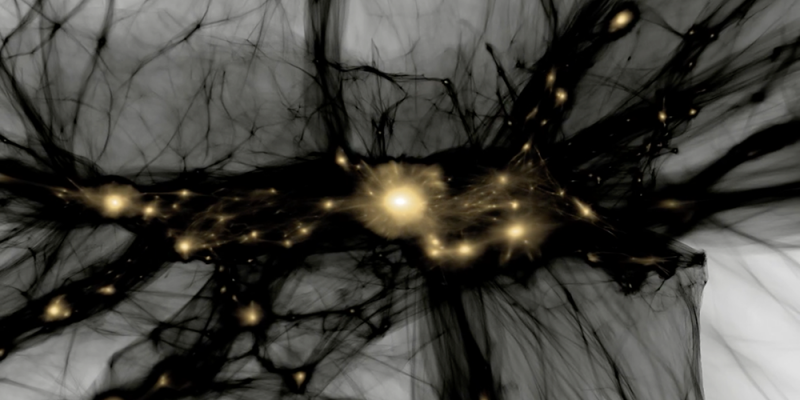Cosmology

One of the key problems in cosmology is the nature of its "dark" components: dark energy and dark matter.
Dark matter is a hypothetical particle which basically does not interact with "normal" matter (atoms) or light, and it accounts for about 80% of the mass in galaxies and in galaxy clusters. Although still unproven (in terms of any confirmed direct or indirect detection), it is consistent with a huge number of astronomical observations, from the rotation curves of galaxies to direct estimates of the masses in galaxy clusters. However, after more than 80 years, we still don't know what exactly is dark matter -- but physicists are looking for it in every conceivable way.
Dark energy, on the other hand, is the hypothetical componente responsible for the accelerated expansion of the Universe. In contrast to dark matter, it cannot be found in gravitationally bound structures such as planetary systems, galaxies or even galaxy clusters: if it exists, it is spread almost homogeneously across the Universe. Dark energy was first found when astronomers used Type Ia supernovas to measure distances to those exploding stars, and found that the data showed that the expansion rate has been increasing for the past few billions of years -- something which should not be happening with the "usual" components such as atoms or dark matter.
Astronomical data today indicates that, of the total budget of matter/energy in the Universe, atoms (normal matter) accounts for less than 1/20 of the total, while dark matter and dark energy account for more than 95% (see the figure below).
The physical mechanism behind the acceledated expansion is still a mystery: after all, the attraction between galaxies should cause the expansion to slow down with time. In fact we know that this is exactly what happened for the first ~8 billion years of the history of the Universe. However, at some point this trend reversed, and the expansion rate started to accelerate.
The simplest explanation for this reversal is that the Universe was dominated by "normal" matter (atoms) and dark matter, but with the expansion these components became more and more diluted. Dark energy, on the other hand, somehow does not get diluted with the expansion, and its effect is to increase the rate of that expansion. Of course, this is not a very satisfactory explanation, even if there are physical models that lead to this scenario. Dark energy remains one of the deepest and most fundamental questions of modern science.
